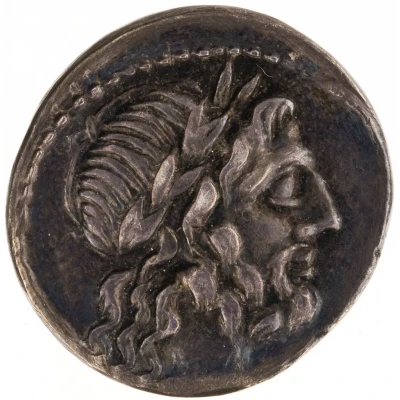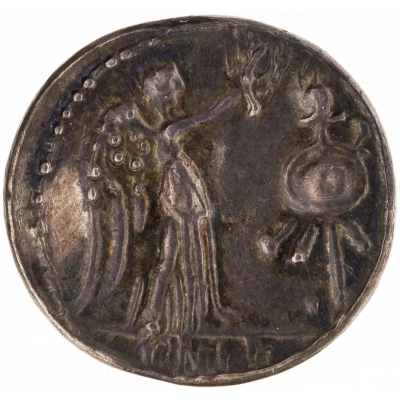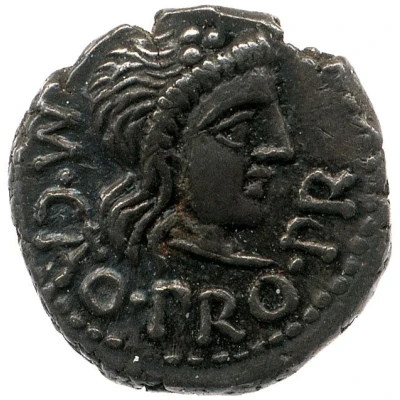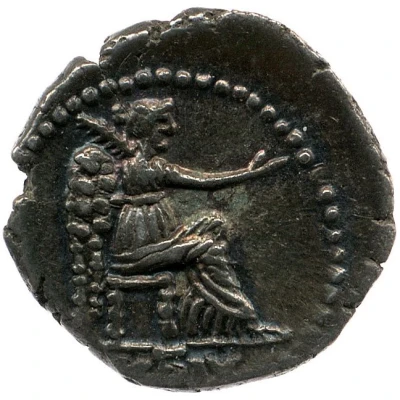


© Bibliothèque nationale de France / Gallica
Quinarius Rubria: Lucius Rubrius Dossenus; DOSSEN / L•RVBRI 87 BC
87 BC year| Silver | 1.97 g | 16 mm |
| Issuer | Rome › Roman Republic (509 BC - 27 BC) |
|---|---|
| Period | Republic (509 BC - 27 BC) |
| Type | Standard circulation coin |
| Year | 87 BC |
| Value | Quinarius (½) |
| Currency | Denarius of 16 Asses (141 – 27 BC) |
| Composition | Silver |
| Weight | 1.97 g |
| Diameter | 16 mm |
| Shape | Round (irregular) |
| Technique | Hammered |
| Orientation | Variable alignment ↺ |
| Demonetized | Yes |
| Updated | 2024-10-06 |
| Numista | N#391418 |
|---|---|
| Rarity index | 97% |
Reverse
Victory standing right, holding wreath and palm-branch in left hand and raising right hand; before, garlanded altar with snake coiled round top. Border of dots.
Script: Latin
Lettering: L•RVBRI
Comment
The gens Rubria was a pleabian family whose plebeian rank is inferred from Rubrius, a tribune of the people, having carried a law named after him, the lex Rubria.
Interesting fact
The Quinarius coin was used to pay the Roman soldiers during the Roman Republic. It was a small silver coin that was equivalent to half of a denarius, which was the standard wage for a Roman soldier. The Quinarius coin was introduced during the reign of Lucius Cornelius Sulla, a Roman general and statesman, in 87 BC. The coin was minted in large quantities to pay for the military campaigns and it remained in circulation until the fall of the Roman Republic. It's fascinating to think that this coin played a significant role in the military operations of the Roman Republic and was used to pay the soldiers who fought to expand the Roman Empire.



